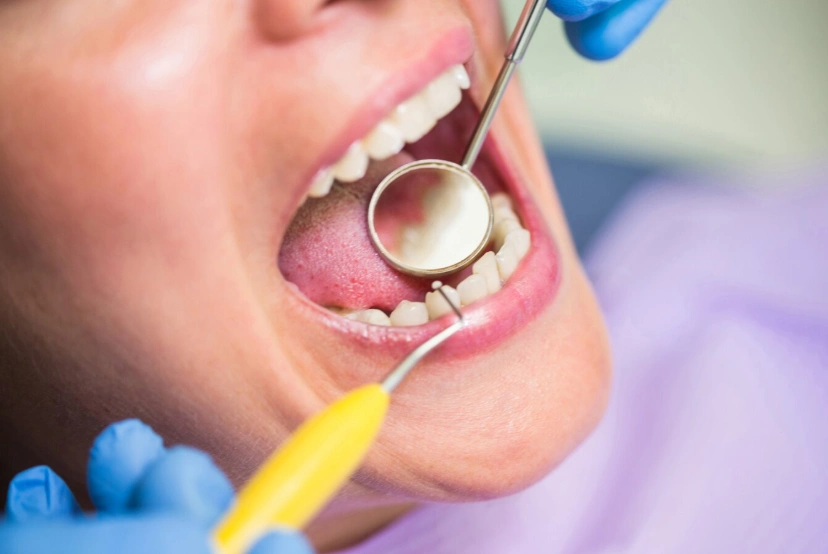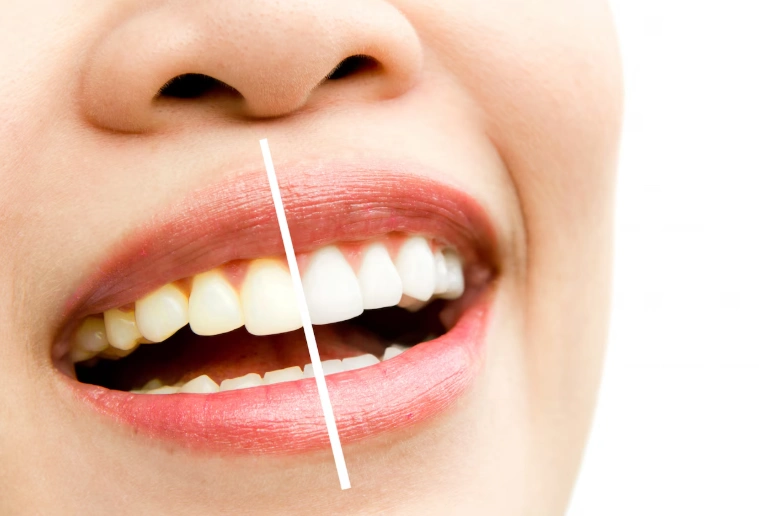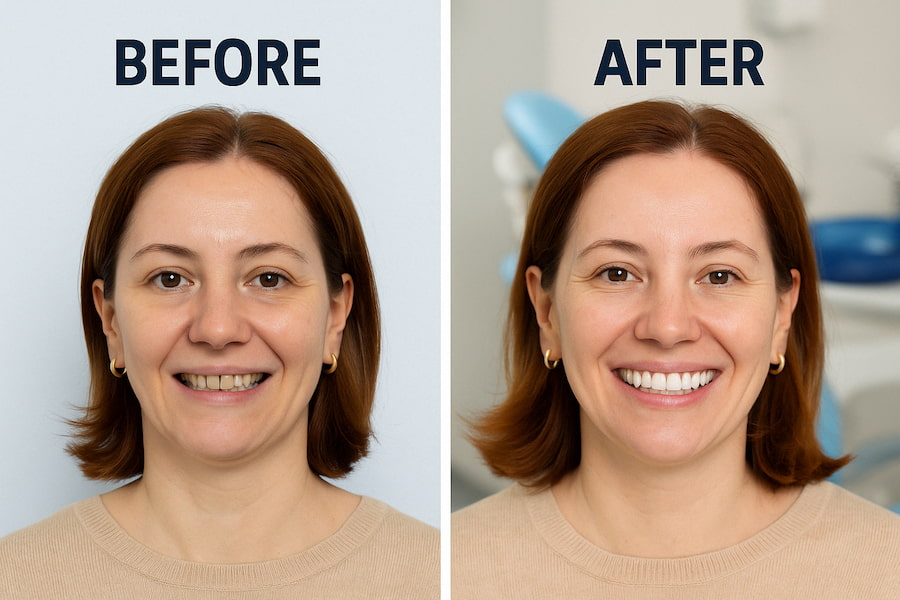How to Remove Tartar from Your Teeth?

Have you ever seen a thin brown deposit on your gums that is difficult to remove even after brushing several times? It’s not quite the result of a previous snack – it’s tartar. And once it has formed, it is difficult to remove it. However, our task is to explain how the tartar is created, what to do in order to be able to eliminate (even at home), and how to prevent it from coming back.
A little plaque today can turn into a lot of tartar tomorrow. Whether you’re dealing with early buildup or ready for a full teeth cleaning, Lema Dental Clinic in Istanbul offers professional, affordable care. Don’t wait—your smile’s future depends on it.
What Is Tartar and How Does It Form?

Dental plaque is composed of a mixture of bacteria and their secretions and tooth debris that deliver food for the bacteria, the digestion of which causes an acidic environment and eventually the hardening or calcification of the plaque. Tartar is a condition that is the result of plaque solidifying, i.e., hardening. If you do not brush and floss well, the plaque will accumulate, and in a matter of 1-3 days, it can solidify and become tartar. When it comes to your teeth, it’s practically impossible to get rid of them. The formation of tartar occurs more commonly in areas where saliva flow is decreased, and also in the complexity of the anatomy of the teeth. One of the main features of tartar is its porosity, which allows the accumulation of bacterial plaque to be deposited on its surface more easily, and then it can combine to create the calculus. This is the reason why both the removal of the plaque and the calculus are a necessary step in controlling the periodontal disease.
Tartar is a threat to teeth as it can lead to many other dental problems, such as tooth decay or gum disease, and halitosis, and it makes no difference how much you use teeth whitening toothpaste. The reason for this is that if you brush your teeth only, you will still have the same problems, although this will work if the tartar hasn’t formed yet.
Professional Tartar Removal: What to Expect

If you happen to identify with this situation, then it really is time to go to the dentist. The process of tartar removal adopted in Lema Dental Clinic – Istanbul. Scaling, the removal of tartar, is done in a dental clinic. This is achieved by the use of either manual scrapers or ultrasonic machines that remove the tartar from the teeth’s hard-to-reach areas by vibrating on the surface of the tooth enamel at high frequencies.
What’s your reaction to this question? The majority of people opt for the dentist. Clinics like Lema Dental Clinic in Istanbul are the best. Scaling is the process of the removal of tartar from the teeth in the dental clinic. To establish that the tartar is no longer present and one’s full of healthy teeth, a special scaler is used by the dentist. This process of scaling should initially commence with comfortable and calm feelings, that is why it is good if your gums are not sensitive, otherwise the dentist would numb them by applying an anaesthetic. When the process of scaling is completed, your teeth might be slightly sensitive but still clean, smooth, and healthy.
Can You Remove Tartar at Home?

One important point is that, although you can do it yourself to a certain extent, when plaque becomes tartar, it is only a dentist can remove it. However, there are still some sayings that natural remedies would not only ease symptoms, but also prevent them from getting more serious:
- Baking Soda Paste: The product of baking soda and a little bit of water, combined with careful brushing, can work miracles. Such a mix neutralizes acids, and alongside that, it removes mild stains, which, though, will not include deep tartar.
- Oil Pulling: The use of coconut or sesame oil as a swishing in the mouth, for 10–15 minutes, can lead to the exoskeleton of bacteria and plaque.
- Hydrogen Peroxide + Baking Soda: A lot of people carry out this method when they do an at-home mouth rinse. It can really stop plaque, although, once again, it would not be able to destroy hardened tartar.
Caution: Do not ever try to scratch off the tartar yourself with sharp items, as you can accidentally hurt your gums and enamel, and the situation can get worse.
How to Prevent Tartar Buildup
The most effective method of dealing with tartar is to avoid its formation. Here are the methods you can apply to maintain hygiene for a healthy smile:
- Brush your teeth with fluoride toothpaste for at least 2 minutes twice every day.
- Use an electric toothbrush rather than a manual one as they are clinician-proven as being more effective in removing plaque.
- Flossing every day is very important as it is a very good way to get rid of the dental plaque that is in between your teeth and that your toothbrush can’t eliminate.
- An antibacterial mouthwash is also a good solution to get rid of bacteria that still dwell in your oral cavity.
- Monitor your daily nutrition carefully. Limit the consumption of sweetened snacks and soft drinks, which are actually a major source of food for bacteria.
- It is advisable to drink a lot of water to keep rinsing your mouth and prevent the pieces left from being clogged in the gum areas. You should go for a cup of water each time you consume food.
- Also, don’t forget to go to the dentist for regular check-ups and cleanings, which should be around every 6 months.
By taking a little bit of extra care each day, you will be able to eliminate tartar before it becomes an issue.
Aftercare: What to Do After Tartar Removal
Having your teeth professionally cleaned is complete – what’s next?
- Feel some degree of sensitivity to cold or hot meals for some time.
- For 24–48 hours, say no to drinks that might stain, like coffee, tea, or red wine.
- You may decide to use a toothbrush with soft bristles and a paste that is gentle if your gums are painful.
- Do as your dentist told you to brush and floss your mouth properly.
Yes, it is a good idea to get motivated and keep that clean, attractive smile.
Frequently Asked Questions About Tartar Removal
You can try brushing with baking soda or using antibacterial mouthwash to slow plaque buildup, but only a dentist can remove hardened tartar.
Yes, sometimes tartar can break off on its own, especially if it’s large—but this usually means you have advanced buildup and still need professional cleaning.
Dentists use tools like scalers or ultrasonic devices to break and remove tartar safely and painlessly during a professional cleaning.
Black tartar is tartar that’s been stained by things like coffee, tobacco, or certain foods—it’s often a sign of long-term buildup and needs a dentist’s help to remove.
Plaque is a soft, sticky film you can brush off; tartar is what plaque turns into when it hardens and requires dental tools to remove.
Usually not! You may feel some vibration or pressure, but the process is quick and generally painless—especially with modern tools and gentle techniques.




